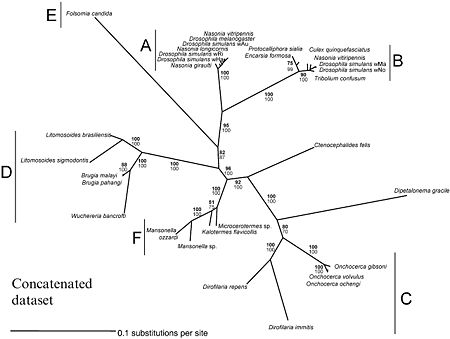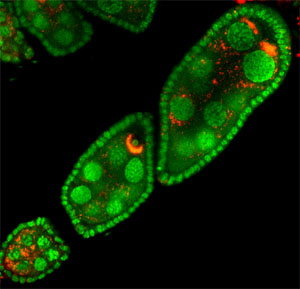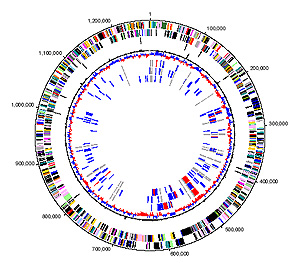Wolbachia pipientis
A Microbial Biorealm page on the genus Wolbachia pipientis

Classification
Higher order taxa
Bacteria; Proteobacteria; Alphaproteobacteria; Rickettsiales; Rickettsiaceae; Wolbachieae; Wolbachia
Species
wMel
|
NCBI: Taxonomy |
Genus species
Description and significance

Wolbachia are gram-negative bacteria that form intracellular inherited infections in many invertebrates. They are extremely common with 20-75% of all insects being infected. Moreover they infect numerous non-insect invertebrates including nematodes, mites and spiders. The limits of the host range of Wolbachia are not fully appreciated at this time. Much of the success of Wolbachia can be attributed to the diverse phenotypes that result from infection. These range from classical mutualism to reproductive parasitism as characterized by the ability of Wolbachia to override chromosomal sex determination,
induce parthenogenesis, selectively kill males, influence sperm competition and generate cytoplasmic incompatibility in early embryos. The unique biology of Wolbachia has attracted a growing number of researchers interested in questions ranging from the evolutionary implications of infection through to the use of this agent for pest and disease control
Genome structure
Analysis of the genome, in particular phylogenomic comparisons with other intracellular bacteria, has revealed many insights into the biology and evolution of Wolbachia. For example, the genome is unique among sequenced obligate intracellular species in both being highly streamlined and containing very high levels of repetitive DNA and mobile DNA elements. This observation, coupled with multiple evolutionary reconstructions, suggests that natural selection is somewhat inefficient, most likely owing to the occurrence of repeated population bottlenecks.
Cell structure and metabolism
Genome analysis predicts many metabolic differences with the closely related Rickettsia species, including the presence of intact glycolysis and purine synthesis, which may compensate for an inability to obtain ATP directly from its host, as Rickettsia can. Other discoveries include the apparent inability of Wolbachia to synthesize lipopolysaccharide.
Ecology
Describe any interactions with other organisms (included eukaryotes), contributions to the environment, effect on environment, etc.
Pathology
Wolbachia, a bacterial endosymbiont of diverse arthropods, affects its host's reproduction and so is consequential for its host's fitness. In the fruit fly. Host interactions are complex and range from mutualistic to pathogenic, depending on the combination of host and Wolbachia involved. Most striking are the various forms of “reproductive parasitism” that serve to alter host reproduction in order to enhance the transmission of this maternally inherited agent. These include parthenogenesis (infected females reproducing in the absence of mating to produce infected female offspring), feminization (infected males being converted into functional phenotypic females), male-killing (infected male embryos being selectively killed), and cytoplasmic incompatibility (in its simplest form, the developmental arrest of offspring of uninfected females when mated to infected males).
Application to Biotechnology
Does this organism produce any useful compounds or enzymes? What are they and how are they used?
Current Research
Enter summaries of the most recent research here--at least three required

